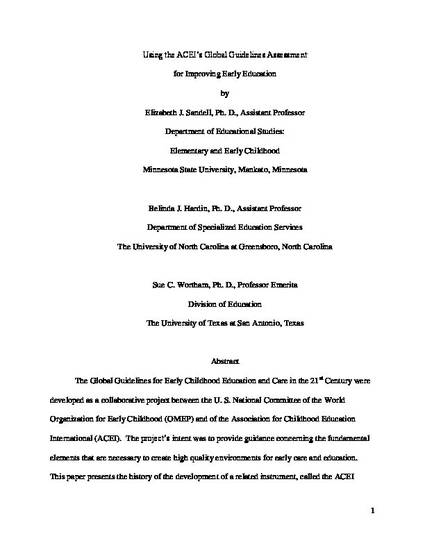
The Global Guidelines for Early Childhood Education and Care in the 21st Century were developed as a collaborative project between the U. S. National Committee of the World Organization for Early Childhood (OMEP) and of the Association for Childhood Education International (ACEI). The project’s intent was to provide guidance concerning the fundamental elements that are necessary to create high quality environments for early care and education. This paper presents the history of the development of a related instrument, called the ACEI Global Guidelines Assessment (GGA). The GGA was developed to help early childhood educators assess and improve program quality, particularly in developing countries. It is divided into five areas: (1) Environment and Physical Space; (2) Curriculum Content and Pedagogy; (3) Early Childhood Educators and Caregivers; (4) Partnership with Families and Communities; and (5) Young Children with Special Needs. The GGA was designed to serve several purposes: (1) to provide a research-based process for making statements to distribute to national government leaders; (2) to promote and provoke policy discussions and curriculum development; and (3) to guide early childhood educators throughout the world to assess their own programs for children.
This is an Accepted Manuscript of an article published by Taylor & Francis Group in Childhood Education on 25/07/2012, available online: http://dx.doi.org/10.1080/00094056.2010.10523137.
Copyright © 2010 Taylor and Francis Group. Article published in Childhood Education, Volume 86, Issue number 3, 2010, pages 157-160. Available online: http://dx.doi.org/10.1080/00094056.2010.10523137.
